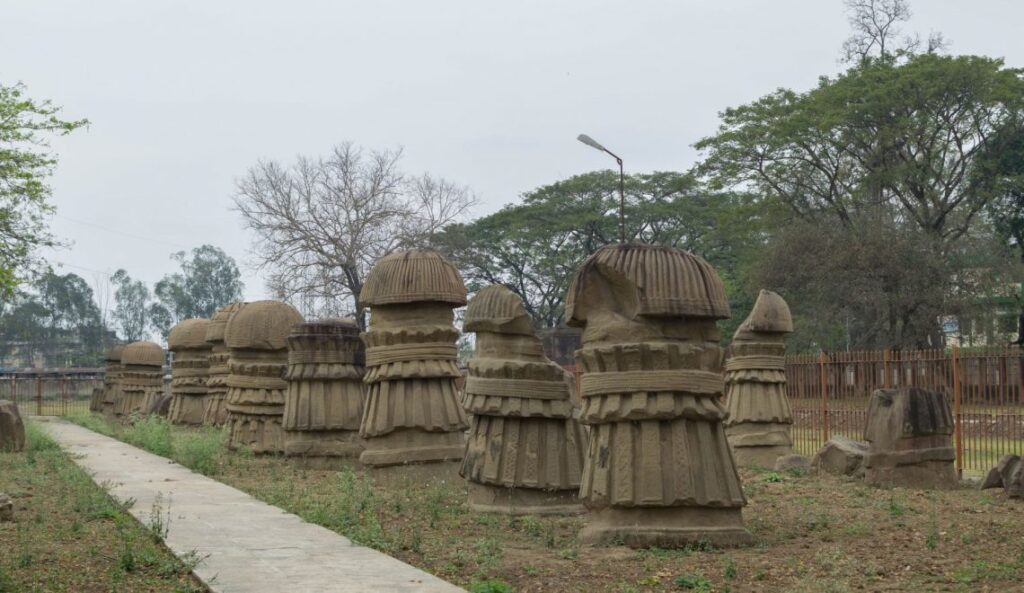On this journey through time, one can unravel the hidden treasures of Nagaland, a land renowned for its vibrant culture and diverse traditions. The state’s historical monuments stand as architectural marvels that whisper tales of a bygone era, offering a glimpse into the lives of those who once walked its hallowed grounds.
This exploration transcends mere sightseeing; it’s an immersive experience that takes us on a voyage to understand the essence of Nagaland’s rich heritage, etched into the very stones of these monuments.
1. Kohima War Cemetery
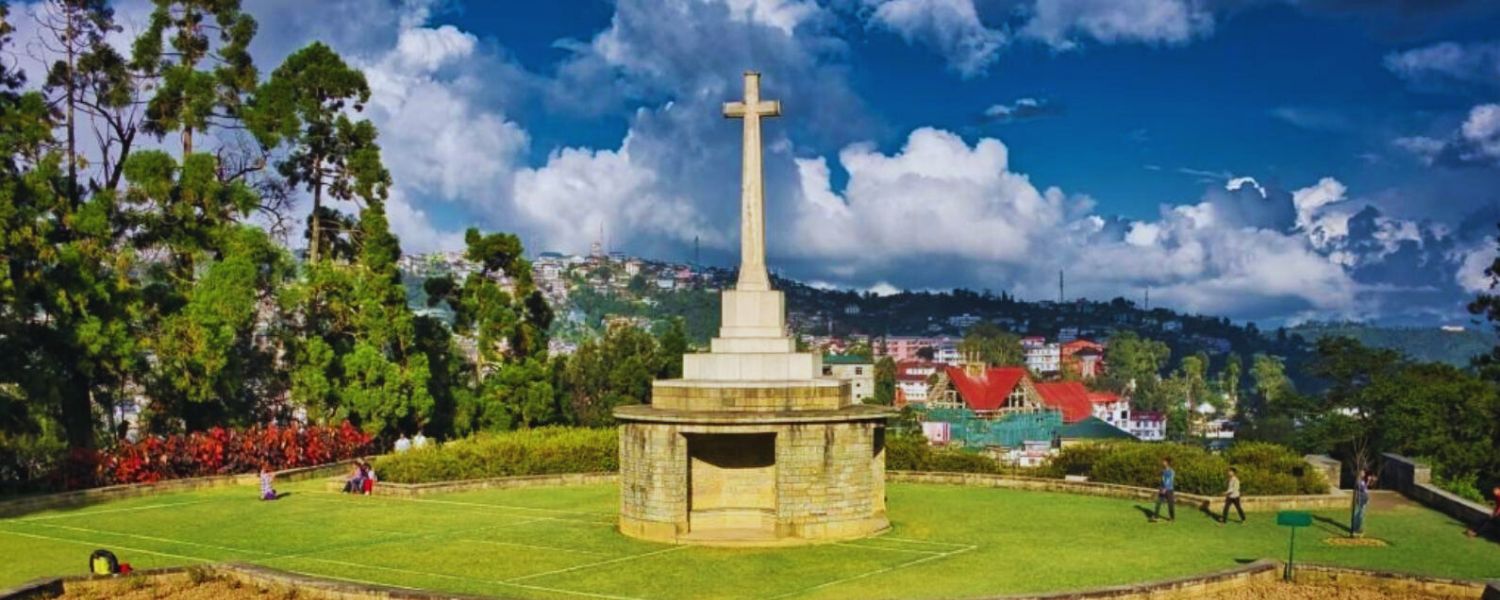
The Kohima War Cemetery stands as a poignant memorial to the soldiers who valiantly fought and sacrificed their lives during the Battle of Kohima, a pivotal conflict in World War II. Situated in the heart of Kohima, the capital of Nagaland, this solemn cemetery holds a deep historical significance.
It is one of the main attractions for tourists and history enthusiasts visiting the region. The cemetery’s well-maintained grounds are a testament to the solemnity of the place, with rows upon rows of white gravestones standing as silent witnesses to the sacrifices made.
The cemetery is a reminder of the harsh realities of war and the resilience displayed by both the soldiers and the local population during those trying times. Each gravestone tells a story, a reminder of the lives lost and the price paid for freedom. The Kohima War Cemetery serves as a sombre place of reflection, allowing visitors to pay their respects and gain a deeper understanding of the human cost of war.
2. State Museum
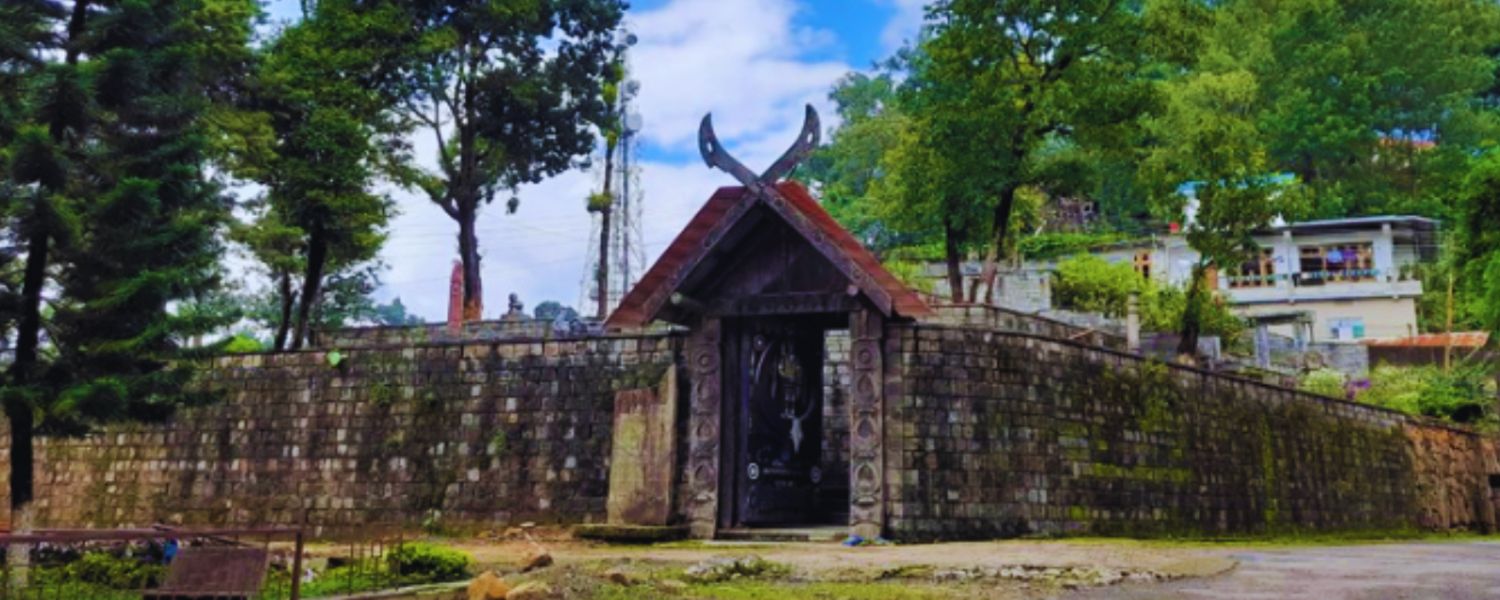
The State Museum in Nagaland serves as a treasure trove of cultural heritage, offering visitors a comprehensive insight into the state’s diverse history, traditions, and art forms. Located in the capital city of Kohima, the museum plays a crucial role in preserving and showcasing Nagaland’s rich heritage.
With a wide array of exhibits ranging from traditional Naga attire to ancient artefacts and handicrafts, the museum is a captivating journey through time. Visitors can explore the various tribal cultures that make up Nagaland, gaining an appreciation for the intricate craftsmanship and artistic expressions that define each community.
The museum also sheds light on the evolution of Naga society, from its tribal roots to its interactions with the outside world. Through its meticulously curated displays, the State Museum serves as a bridge between the past and the present, fostering a deeper understanding of Nagaland’s cultural identity.
3. Changtongya Stone Monoliths

The Changtongya Stone Monoliths, located in the Mokokchung District of Nagaland, stand as silent witnesses to the rich cultural history of the region. These ancient stone monoliths are believed to have played a significant role in the social and ceremonial life of the Ao Naga tribe.
Carved with intricate designs and symbols, these monoliths are thought to have served as markers for various rituals and events. The craftsmanship displayed on these stones reflects the artistic and technical skills of the ancestors.
These monoliths hold stories that have been passed down through generations, encapsulating the traditions, beliefs, and societal norms of the past. As the monoliths continue to weather the test of time, they remain a connection to the heritage and identity of the Ao Naga tribe, serving as a reminder of their roots and a testament to the enduring spirit of the people.
4. Longkhum Village Monoliths
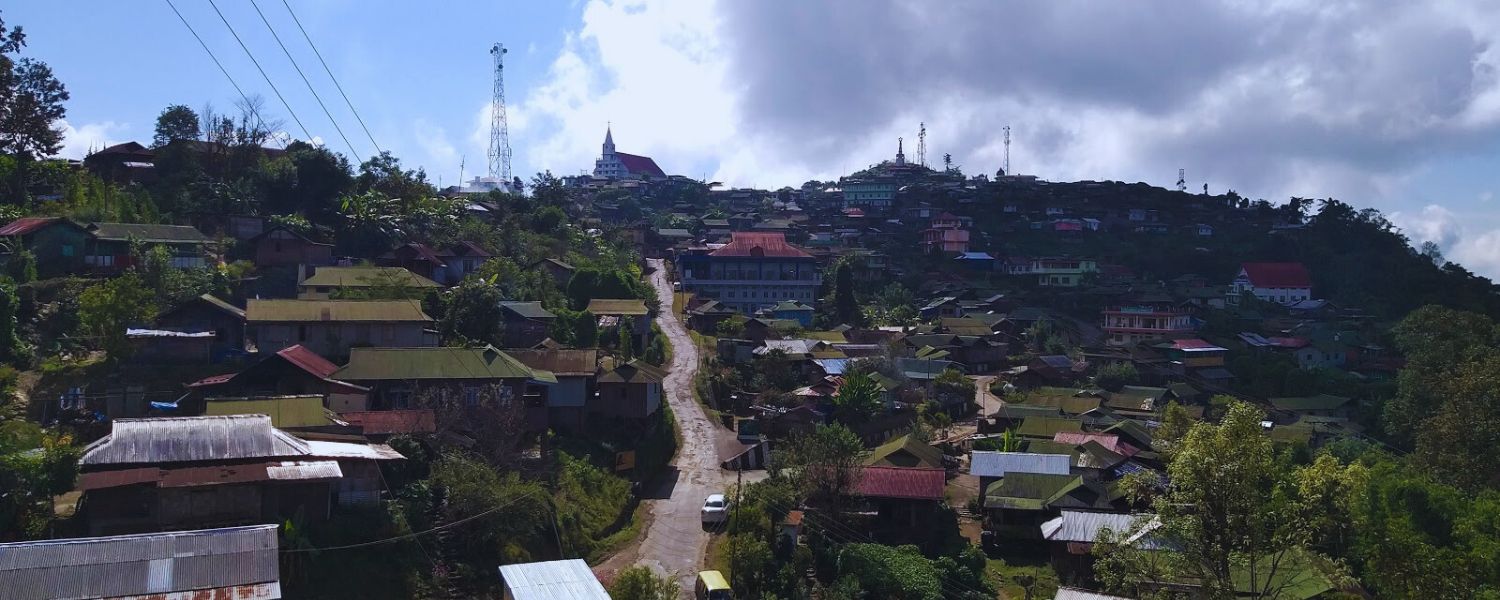
Perched on a hilltop in the Mokokchung District, the Longkhum Village Monoliths offer a captivating glimpse into the history and cultural practices of the Ao Naga community. These monoliths, with their intricate carvings and engravings, depict scenes from the lives of the ancestors.
They stand as markers of events, achievements, and significant moments in the tribe’s history. Longkhum’s monoliths not only showcase artistic finesse but also serve as a medium to transmit oral traditions and folk tales to succeeding generations.
With each monolith carrying a story of its own, the village becomes a living museum where visitors can immerse themselves in the cultural fabric of the Ao Naga people. These stone monuments, set against the backdrop of the village’s scenic beauty, evoke a sense of connection to the past and a deep appreciation for the community’s heritage.
5. Mokokchung Village Gates

Mokokchung, a town in Nagaland, is renowned for its captivating village gates that stand as artistic and cultural marvels. These gates, gracing the entrances to the town, are striking examples of the Ao Naga tribe’s architectural ingenuity.
Carved from wood with intricate designs and motifs, these gates serve as symbolic markers of the town’s identity and heritage. They depict the tribe’s history, beliefs, and customs, offering a visual narrative of the community’s journey. The designs are meticulously crafted, showcasing the tribe’s artistic prowess and attention to detail.
These gates also reflect the Ao Naga’s communal lifestyle and their deep-rooted connection to their land. As visitors pass through these gates, they are greeted not just by physical structures but by a tangible link to the past, serving as a reminder of the rich traditions that continue to shape Mokokchung’s present.
6. Zunheboto Village Gates
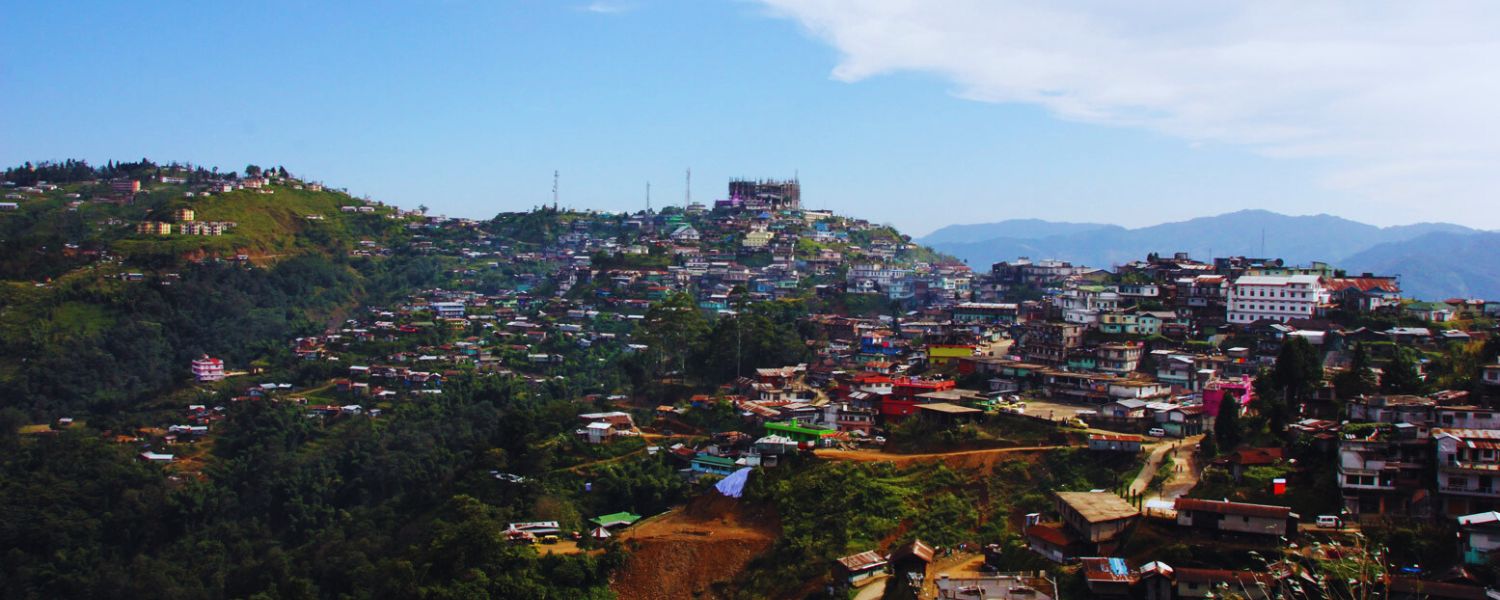
Zunheboto, another Naga town, is adorned with its own unique village gates that hold historical and cultural significance. These gates are more than just entrances; they encapsulate the stories and essence of the Sema Naga tribe, which predominantly resides in the region.
The gates’ designs intricately weave together tales of heroism, folklore, and ancestral pride. Each carving and element has a purpose, reflecting the tribe’s values and celebrating its achievements. For the Sema Naga people, these gates are a source of identity and unity, a tangible representation of their shared heritage.
As one passes under these gates, they are entering a space where tradition meets modernity, where the echoes of the past resonate in the present. These gates stand as silent storytellers, inviting all who pass through to engage with the living history of the Sema Naga tribe.
7. Catholic Church, Kohima

Perched on a hilltop in Kohima, the Catholic Church is a historical and architectural gem that adds a unique dimension to the city’s landscape. Built during the British colonial era, the church showcases a blend of European and local Naga architectural styles.
The stately structure, with its elegant spires and intricate stained glass windows, stands as a testament to the convergence of cultures. Its construction began in the 1940s and the church has since witnessed the passage of time, including the tumultuous events of World War II.
It holds religious, historical, and cultural significance, serving as a place of worship and a symbol of the enduring spirit of the community. The Catholic Church in Kohima is more than a religious institution; it’s a reflection of the Naga people’s adaptability and resilience, harmonising tradition and change in a tangible way.
8. Kachari Ruins
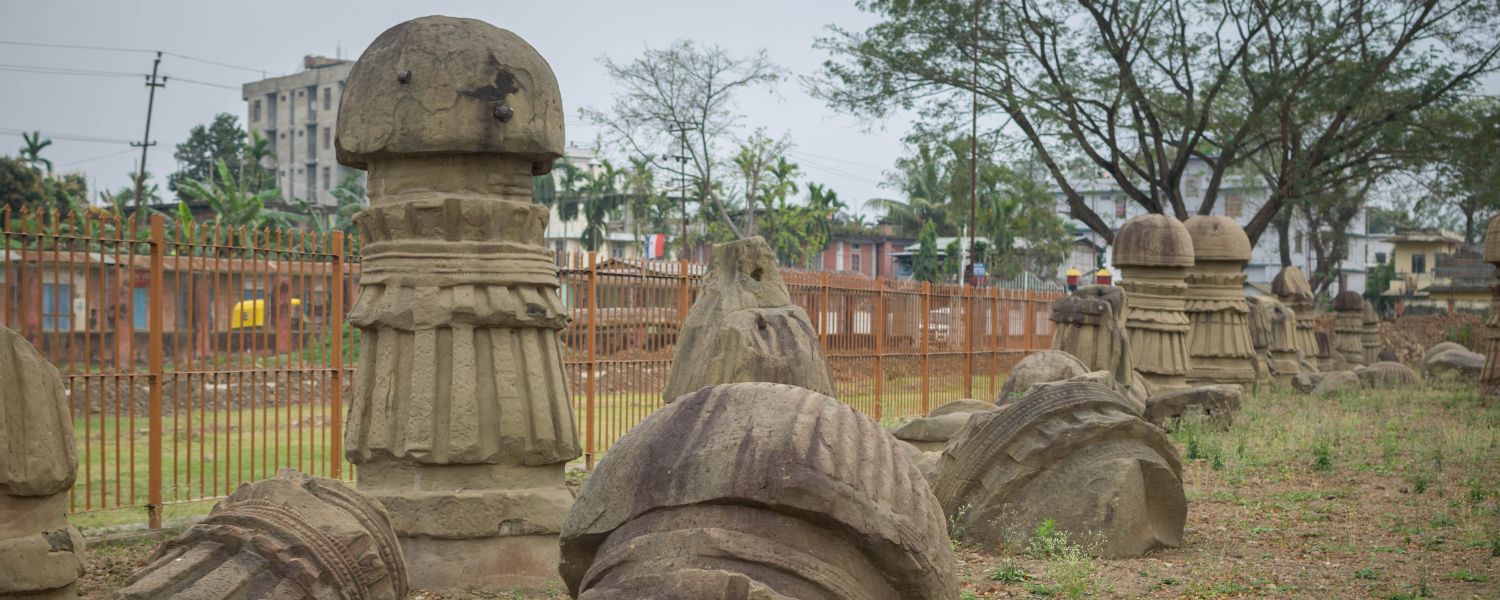
The Kachari Ruins in Dimapur stand as enigmatic remnants of the Kachari kingdom, which thrived in the region centuries ago. These ruins are a testament to the architectural brilliance of the Kachari civilization.
Consisting of various structures, including octagonal pillars and flat stone seats, the ruins reflect the sophisticated craftsmanship of their time. Historians believe that these structures served as administrative and cultural centres.
The intricate carvings on the stone pillars provide insights into the beliefs and way of life of the Kachari people. Over the years, weathering and the passage of time have added a certain mystique to the ruins, drawing visitors and researchers alike.
The site serves as a tangible link to a bygone era, allowing us to appreciate the advanced architectural techniques and cultural heritage of the Kachari kingdom.
9. Dzükou Valley

While not a single monument, this valley is steeped in myth and legend, and its lush landscapes hold historical significance. Dzükou Valley, often referred to as the ‘Valley of Flowers’ of the Northeast, is a breathtaking natural wonder nestled in the Eastern Himalayas.
Situated at an elevation of about 2,450 metres, the valley is known for its lush green landscapes, vibrant wildflowers, and pristine streams. It holds deep cultural significance for the Naga tribes, and its name translates to ‘Cold Water’ in the local dialect.
The valley has been a trekker’s paradise, with routes leading through dense forests and steep terrains. Dzükou is not just a feast for the eyes but also a shelter for diverse flora and fauna, some of which are endemic to the region. The valley’s serene beauty, combined with its cultural and ecological importance, has made it a must-visit destination for nature enthusiasts, trekkers, and those seeking a tranquil retreat.
If you are planning a trip to Nagaland, you can also explore the famous mountains of Nagaland here.
10. Tuophema Tourist Village
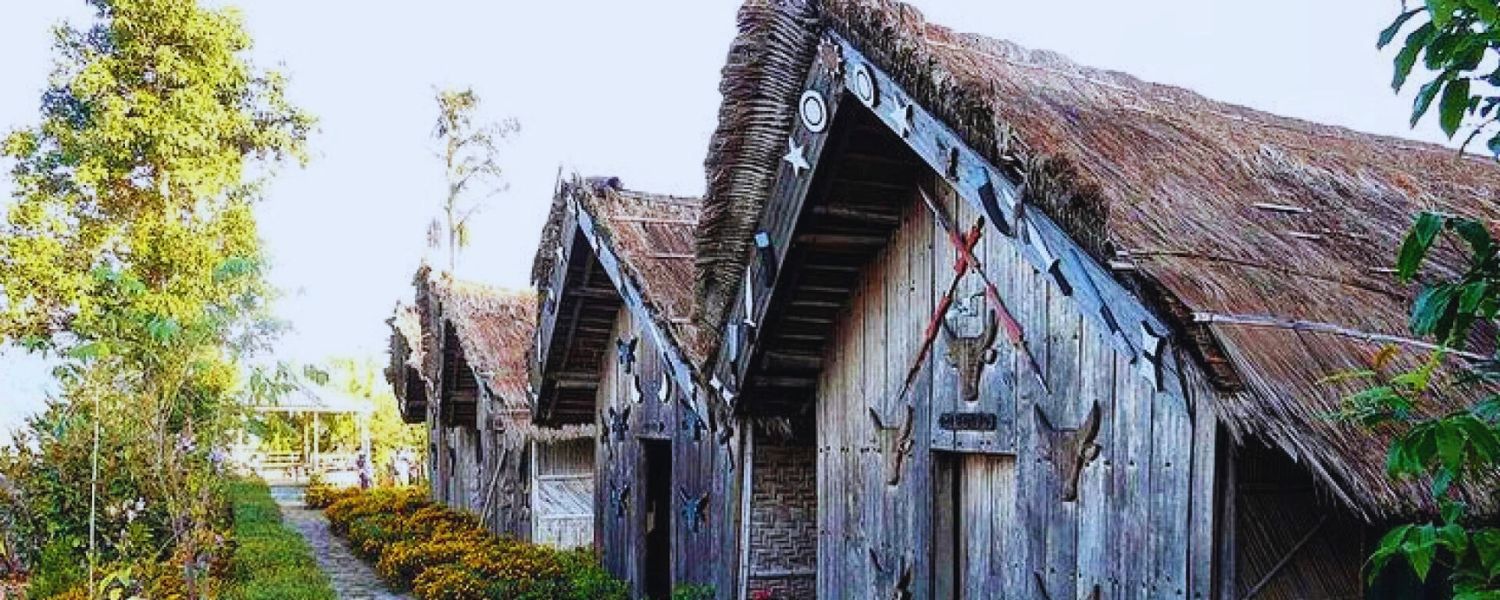
Tuophema Tourist Village offers a unique and authentic insight into the traditional Naga way of life. Situated in the hills of Nagaland, this village has been meticulously designed to provide visitors with an immersive experience of Naga culture.
The village’s architecture, including its thatched huts and bamboo structures, mirrors the indigenous housing style. Visitors can engage in hands-on experiences like bamboo crafting, traditional cooking, and learning about indigenous customs.
The village’s inhabitants are warm and welcoming, often sharing stories that connect the past with the present. The setting, with its rustic charm and panoramic views, allows guests to escape the hustle of modern life and engage with a simpler, community-based lifestyle. Tuophema’s endeavour to preserve and showcase Naga traditions while accommodating tourists showcases the harmonious blend of heritage and modernity in Nagaland.
11. Wokha District Monoliths
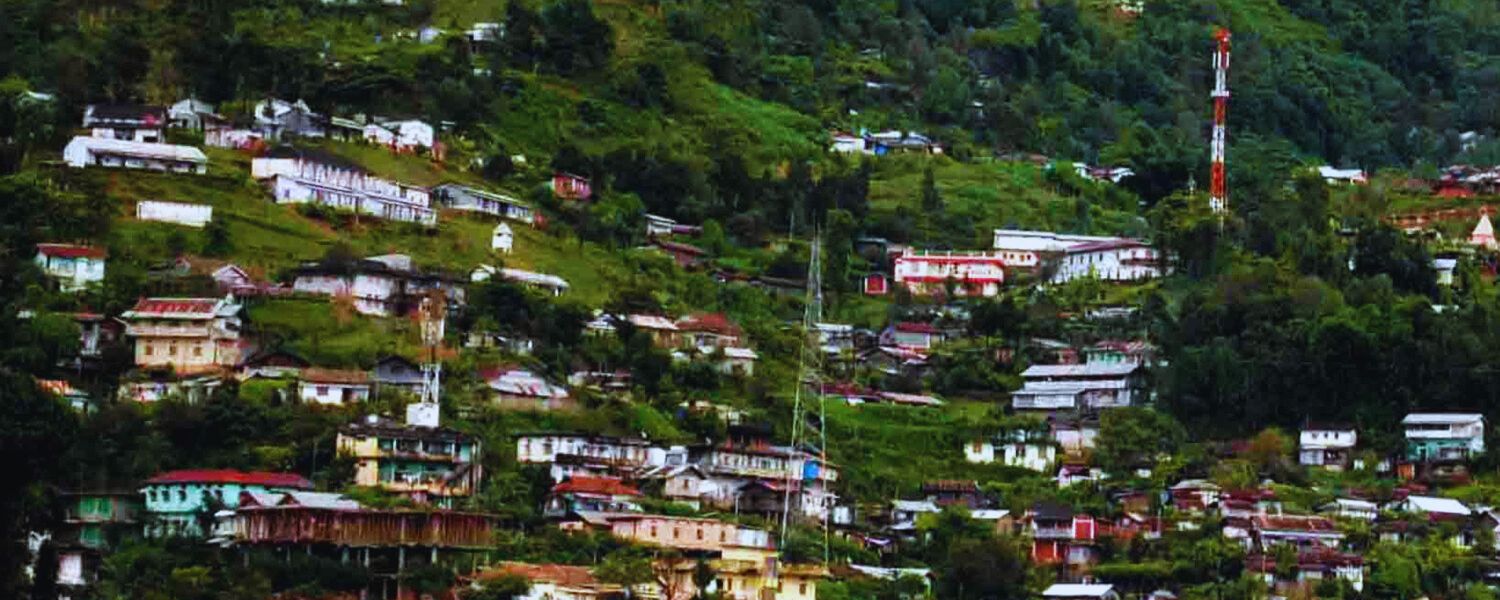
Nestled in the picturesque landscapes of Wokha district, the Wokha District Monoliths are compelling historical artefacts that offer a glimpse into the region’s past. These monoliths, crafted from large stones, serve as enduring symbols of the achievements and valour of the ancestors.
Carved with intricate motifs and symbols, these monoliths stand as silent witnesses to the stories and legends of the Lotha Naga tribe. While the exact origins of some of these monoliths remain shrouded in mystery, they are believed to have been erected to commemorate important events, ceremonies, or heroic acts.
The monoliths also reflect the artistic sensibilities of the Lotha people, showcasing their craftsmanship and attention to detail. As the years pass, these monoliths continue to evoke a sense of reverence and connection to the tribe’s roots, reminding both locals and visitors alike of the enduring legacy of the Lotha Naga people.
12. Kohima Cathedral
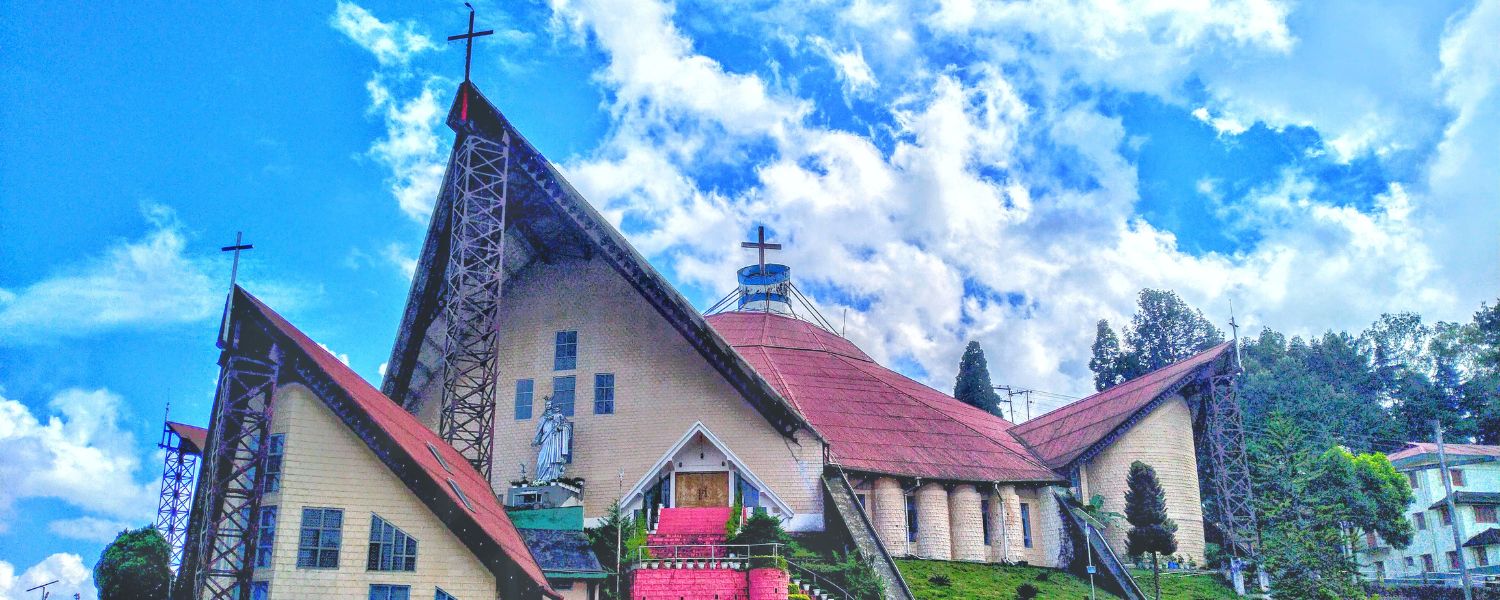
The Kohima Cathedral, a striking blend of European and Naga architectural styles, holds a significant place in the heart of Kohima. Built during the British colonial era, the cathedral’s intricate design and grandeur stand as a testament to the historical and cultural fusion that has shaped the region.
Its Gothic architecture, characterised by pointed arches and elaborate detailing, reflects the colonial influence, while Naga elements are seamlessly integrated, adding a distinctive local touch. The stained glass windows depict scenes from both Christian and Naga history, bridging the gap between the two worlds.
Beyond its architectural marvel, the cathedral serves as a place of worship and a cultural hub, hosting various events that bring the community together. As a landmark of unity, the Kohima Cathedral beautifully encapsulates the spirit of cooperation between different cultures, making it an integral part of Kohima’s identity and history.
13. Khonoma Village Gates

The Khonoma Village Gates hold an esteemed position as historical and cultural landmarks in Nagaland. Situated in the village of Khonoma, these gates are not merely physical structures but symbolic representations of the village’s history, pride, and collective identity.
These intricately designed gates are adorned with carvings that depict various aspects of the village’s cultural heritage, including scenes from traditional folklore, Naga rituals, and warrior symbols. The gates stand as a testament to the village’s valour and unity, as they were once erected as a defence mechanism against intruders during tribal conflicts.
Beyond their defensive role, the Khonoma Village Gates embody the spirit of conservation and community engagement. Khonoma is renowned for its pioneering efforts in promoting sustainable eco-tourism and wildlife conservation, and the gates serve as a visual reminder of the village’s commitment to preserving its natural and cultural heritage.
Visitors are greeted by these gates, which serve as a bridge between the past and the present, welcoming them to explore a village deeply rooted in tradition while embracing modern practices.
Conclusion
As we conclude our expedition through the architectural marvels of Nagaland’s historical monuments, we find ourselves not only enriched with knowledge but also touched by the profound legacy of this land. The journey has allowed us to witness the intricate craftsmanship, the devotion to culture, and the stories that have shaped Nagaland’s narrative.
Each monument encapsulates a chapter of history, a piece of the cultural mosaic that forms the state’s identity. It’s a reminder that while time marches on, the past continues to live within these stone witnesses, urging us to preserve and appreciate the heritage that’s intricately woven into Nagaland’s tapestry. This odyssey of discovery is an invitation to all, beckoning us to traverse beyond the present and delve into the profound historical depths that Nagaland has to offer.
